How to Pick the Best Upholstery Fabric for Furniture
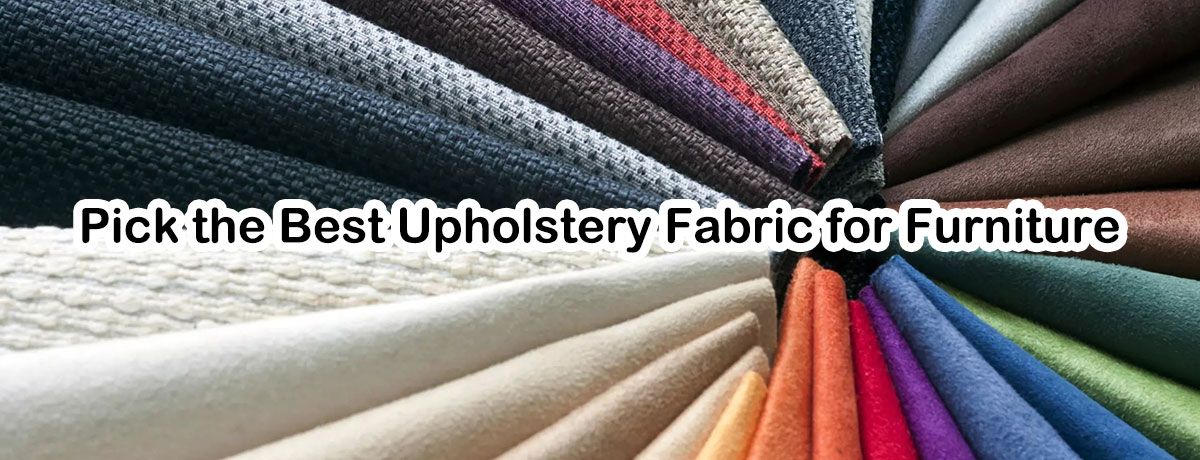
Fabric is more than just a design choice – it’s part of a piece of furniture’s functionality, durability and value. Choosing the right fabric for the right use – durability and maintenance – can make all the difference in customer satisfaction, production efficiency and profit margins. For wholesalers and manufacturers, knowing the types of fabric and their characteristics is key to making a decision.
This guide explains the types of upholstery fabric, their features and the most durable options for furniture making.
What is Upholstery Fabric?
Upholstery fabric is the textile used to cover furniture, comfort and style. Heavy duty fabric is perfect for high use, it’s strong and durable. It comes in natural and synthetic materials to suit different needs such as durability, appearance and maintenance. Professionals must consider the use of the furniture, design and end user’s preference to choose the best upholstery fabric.
From traditional natural fibers like cotton and linen to high performance synthetic blends, there’s an upholstery fabric to suit any furniture production.
Natural Upholstery Fabric
Natural fabrics are popular for their softness, breathability and eco friendly. These materials are sourced from natural fibers like plants or animals, and are suitable for residential furniture with medium use.
Cotton
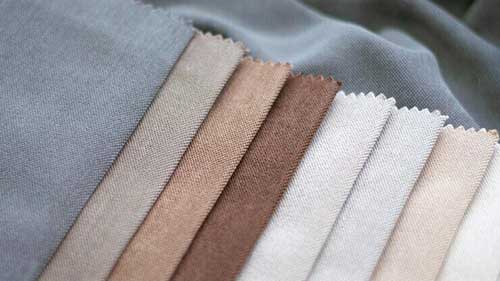
Cotton is a versatile and popular upholstery fabric known for its softness and breathability. Affordable and available in many colors and patterns, pure cotton can wrinkle and stain unless treated. Cotton’s durability improves when blended with synthetic fibers.
Cotton Blend
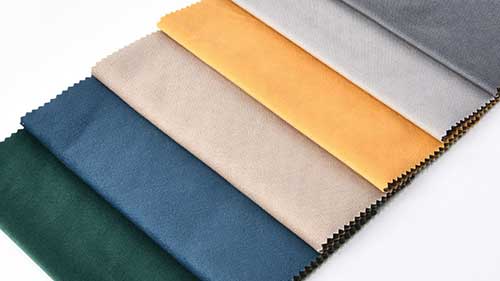
Cotton blends combine the natural look of cotton with the durability of synthetic fibers. These fabrics are less likely to wrinkle, stain or fade making them a cost effective and reliable option for everyday use furniture.
Leather
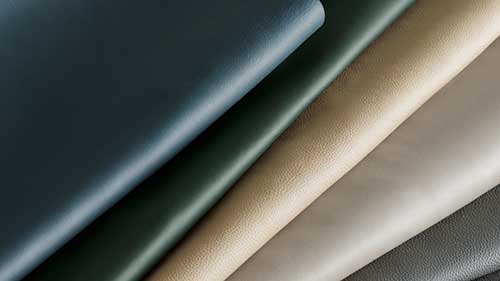
Leather is luxury, durability and timeless. It’s wear resistant and easy to clean making it a favorite for high end furniture and high use items like sofas and chairs. But its higher cost and maintenance requirements limit its use in price sensitive markets.
Linen
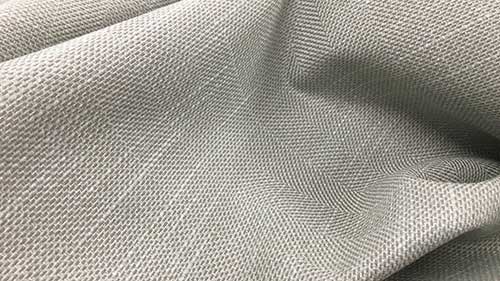
Linen upholstery is light, breathable and chic. It’s perfect for low use furniture as it wrinkles and requires special care. Linen is absorbent so treatments are needed to make it stain resistant.
Silk
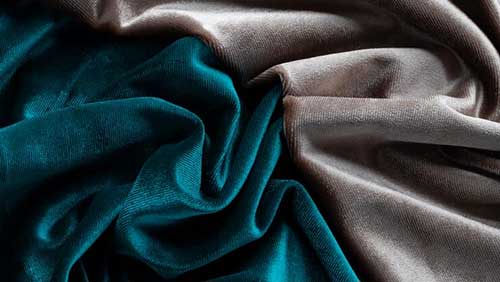
Silk is a premium fabric for sophistication and luxury. Due to its delicate nature and high maintenance requirements it’s reserved for decorative pieces or formal furniture.
Wool
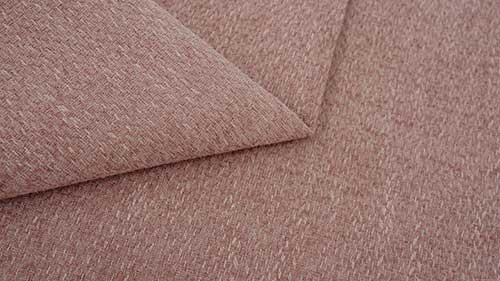
Wool is naturally resilient, moisture resistant and warm, making it very functional for cold climate. While durable it’s often blended with synthetic fibers to prevent pilling and improve its feel.
Synthetic Upholstery Fabric
Synthetic fabrics engineered for strength and performance are best for high use or commercial furniture as they are durable, wear resistant and easy to maintain.
Acetate
Acetate looks like silk at a fraction of the cost. But it’s best used on furniture that won’t be heavily used as it’s less durable than other synthetic options.
Acrylic
Acrylic fabrics are lightweight, fade resistant and can mimic wool’s texture. This fabric is suitable for outdoor furniture or vibrant designs that will be exposed to sun, making it a great option for weather resistant outdoor upholstery fabric used in patios, porches and pool areas.
Microfiber
Microfiber is a polyester derivative and is popular for its durability and stain resistance. Its ultra fine fibers create a soft, velvety texture perfect for high use furniture like family sofas.
Nylon
Nylon is known for its strength and elasticity and is often blended with other fibers to enhance their durability. It’s abrasion resistant but can pill if not treated properly.
Olefin
Olefin is a synthetic material that’s stain resistant, mildew resistant and abrasion resistant. It performs well in outdoor or commercial furniture where resilience is key.
Polyester
Polyester is one of the most versatile upholstery fabric. Fade resistant and stretch resistant it’s often blended with natural fibers to improve durability and longevity.
Rayon
Rayon has a smooth silk like appearance and is used to replicate natural fabrics. But it wrinkles and has moderate durability making it perfect for decorative or low use furniture.
Vinyl
Vinyl is a cost effective alternative to leather used in commercial or children’s furniture due to its water resistant and low maintenance properties. It’s durable at a lower price point but can crack over time.
What’s the Durable Fabric for Upholstery?
When it comes to durability of upholstery fabric, synthetic fabrics often outperform natural ones. Among the fabrics above, the most durable options are microfiber, olefin and vinyl.
Microfiber is perfect for residential furniture as it resists daily wear, stains and fading and has a soft texture. For heavy duty use olefin is a great option as it’s mildew resistant and extremely durable especially for outdoor furniture. Vinyl is another strong contender for commercial use where low maintenance and cost effective is key.
The choice will depend on the use of the furniture, design and budget. Blended fabrics often combine the best of multiple fabrics, like the softness of cotton with synthetic durability making them a versatile option for various applications.
Measuring and Calculating Fabric
Measure your furniture accurately to ensure you have enough fabric for your project. Here’s a step by step guide to measure your furniture:
-
Measure accurately: Use a tape measure to record the length, width and depth of your furniture piece. Measure the arms, seat and backrest separately. Accurate measurements is the foundation of a successful upholstery project.
-
Consider the fabric pattern repeat: If your fabric has a pattern you’ll need to consider the repeat when calculating the fabric needed. The repeat is the distance between the same point on the pattern and ensures the design aligns perfectly across the furniture.
-
Add seam allowances: Add 1-2 inches to your measurements for seam allowances. This extra fabric will give you enough material to cover the entire piece without any gaps or tight spots.
-
Calculate total fabric needed: Use a fabric calculator or consult with a professional upholsterer to determine the total fabric needed for your project. This is the most critical step to avoid running out of fabric mid project and have a smooth finish.
By following these steps you can now buy the right amount of fabric by the yard from your favorite online upholstery fabric store.
Choosing the Right Upholstery Fabric
The right fabric can make a piece of furniture, meet customer expectations for style and function. By understanding the characteristics of natural and synthetic fabrics, wholesalers and manufacturers can make informed decisions for their needs.
Looking to simplify your fabric selection process? Check out our curated upholstery fabric range for your next collection— durable, stylish and affordable.
Fabric Care and Maintenance
Proper care and maintenance can extend the life of your upholstered furniture. Here’s how:
-
Vacuum often: Use a gentle suction to remove dirt and dust from the fabric. Vacuuming regularly prevents dirt from getting embedded in the fibers which can cause wear over time.
-
Spot clean stains: Use mild detergent and water to clean stains. Never use harsh chemicals or abrasive cleaners as they can damage the fabric. For tough stains consider professional cleaning services.
-
Use a fabric protector: Apply a fabric protector to your upholstery fabric to repel stains and spills. This extra layer of protection will make cleaning easier and extend the life of the fabric.
-
Avoid direct sunlight: Direct sunlight can cause fading and discoloration. Use window treatments or UV resistant fabric to protect your furniture from the sun’s rays.
-
Rotate cushions: Rotate cushions regularly to ensure even wear and tear. This simple habit will help maintain the shape and look of your upholstered furniture.
By following these tips your furniture fabric will look fresh and new for years to come.
Upholstery Fabric Trends
Upholstery fabric trends change often. Here are some popular designs and patterns to look out for in your next project:
-
Animal prints: Animal prints like leopard and zebra are always in. They add personality and boldness to any room and make a statement with their unique patterns.
-
Velvet fabric: Velvet fabric is a favorite for upholstery because of its luxurious feel and look. Its texture and color can add sophistication to any piece of furniture.
-
Cotton blend: Cotton blend fabrics are durable and easy to clean, great for high traffic areas like dining room chairs. They combine the natural feel of cotton with the resilience of synthetic fibers.
-
Outdoor furniture fabric: Outdoor furniture fabric is designed to withstand the outdoors. Look for waterproof and UV resistant fabrics for your outdoor projects to extend its life and durability.
-
Ralph Lauren fabrics: Ralph Lauren fabrics are known for their classic timeless designs. They’re perfect for traditional and elegant spaces, organic feel and sophisticated look.
Pick one that suits you and your space. We have many new fabrics on sale.
Related Topics
- The Ultimate Guide to Home Upholstery Fabrics for Sofas
- Is Polyester Fabric for Upholstery Good?
- Is Cotton Fabric Good for Upholstery?
- Is Crushed Velvet Fabric Good for Upholstery?
- Top Heavy Duty Fabric for Upholstery: Durable Solutions for Every Need
- Linen Fabric for Upholstery: A Complete Guide
- Top Grade Cloth Upholstery: Durable, Stylish, Affordable
- Fabric For Upholstery Online: Upholstery Fabric Buying Guide
